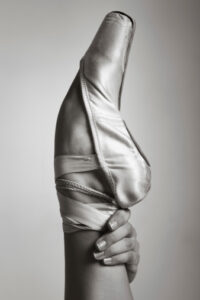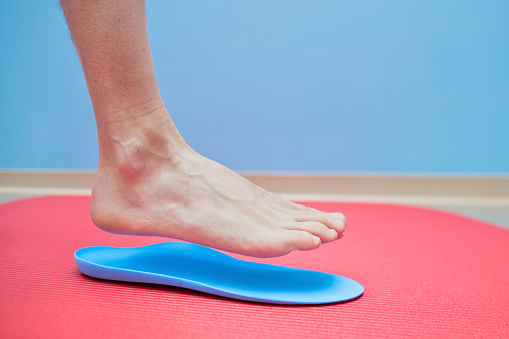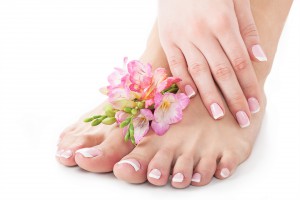Very few dancers have perfect ballet dancing feet, and most of us have to work on our feet to get them as close to the ideal as possible. There are so many different shapes of feet, and each type of foot has a specific set of challenges.
As dancers, it is a good idea to know about the neuropathy of feet and what type of feet we have. Knowing this information allows us to strengthen our feet and ankles, and work towards the ideal.
The foot is very intricate indeed and your two feet have one-fourth of all the bones in your entire body. The human foot alone has 20 muscles, 3 arches, 26 bones, 24 ligaments, 33 joints, and around 7 800 nerves. The force of the body weight taken on by feet is about 1½ times during walking and up to 3-4 times during running. Add in 10,000 steps during a typical day while wearing ill-fitted shoes, and it’s a wonder that those poor feet are still working so hard for you.
If you have any sort of foot pain, or you are a dancer you would do well to learn a bit more about the workings of your foot and the different types and shapes of feet.
This post does contain affiliate links.
Types and Shapes of Ballet Dancing Feet
1. Giselle or Peasant Foot Type
This foot type has three short, stubby toes that are almost the same length. This type of foot is ideal for dancers and especially ballet dancers, as it is usually strong and perfect for balance en pointe.
2. Flat Foot Type
This type of foot is strong and functions normally in most cases, but it is not a pretty foot for dancing purposes. The arches tend to drop inwards and calluses often develop on the side of the big toe. Also, the fallen arches usually create problems for a dancer as the whole alignment of the body is affected.
People with these types of feet usually suffer from knee, hip, and back pain, as well as metatarsal stress fractures, Achilles tendonitis, and plantar fasciitis.
3. Greek or Morton’s Foot

The Greek foot has a gap between the big toe and the second toe, making it an easy foot type to identify. The second toe is also normally longer than all the other toes.
Unfortunately, this type of foot is quite unstable, and people with this foot type suffer from quite a few foot ailments. Some of them include calluses, bunions, plantar fasciitis, Morton’s neuroma, and stress fractures.
4. Egyptian Foot
Egyptian feet are narrow with a longer big toe. The rest of the toes taper down from longest to shortest. This type of foot gives the least problems and is the ideal foot type to own.
5. Simian Foot
In this type of foot, the big toe leans towards the little toe. With this type of foot it is easier to get bunions, so try to avoid wearing pointed and narrow shoes. Ladies with Simian feet will find wearing high heels quite painful.
6. Rothbarts Foot
The Rothbarts Foot is a genetic and abnormal type of foot. You know you have it if you put your foot on the ground in a neutral position, and your big toe and second toe cannot lie flat. This type of foot leads to bad posture.
Everyone should know what type and shape of foot they have, just as they know what blood type they are. Then you will be more aware of what types of problems can occur and why. For instance, if your knees hurt, it may stem from the way you are holding your feet, and nothing actually being wrong with your knees.
So What Is Actually Ideal For Ballet Dancing Feet?

Certain types of feet are less prone to injuries, while others are much more prone. Take your pointe training slowly and also make sure the feet are strong enough before going into pointe shoes. This is half the battle won.
Types Of Feet Less Prone To Injury
- Having a high instep, but there is a fine line between being too arched.
- Having toes of equal length provide a more square platform to stand on.
- Having flexible ankles allows the dancer to form a direct line between the knee and the toes ‘en pointe.’
Types Of Feet More Prone To Injury
- Stiff or inflexible ankles.
- Weak ankles.
- Having a low or no instep.
- Having a long big toe in comparison to all the other toes.
Because ballet is so competitive, many dancers tend to dance on their injuries. This can cause permanent damage, so if you do have a foot injury, rather let it heal. Remember those feet have to last you a lifetime, so look after them now and they will serve you well into the future.
Make sure to see a doctor or a podiatrist if you have a foot injury. Look for someone who specializes in working with dancers. They can create a treatment plan so you can stay healthy and strong throughout your dance career.
Trusting that this article on types and shapes of ballet dancing feet has helped somebody. Please feel free to comment below.




I didn’t know there were so many types of feet. Very interesting! Thank you for sharing!
As a child, I wanted to be a ballet dancer, but soon recognized my feet did not suit ballet dancing. Now I know why. I have Egyptian feet. I’ve frequently been told I have pretty feet. Although I’ve never danced ballet, at age 72 my feet are still pretty and I’ve never had foot problems.
I first published on Rothbarts Foot in 2002. Before then it was an unrecognized foot structure among researchers and clinicians.
If you would like to access more information on this foot type, go to my research site at: http://www.iarpt.com/rothbarts-foot.html
Professor/Dr Rothbart
Thank you for the link, I am sure there will be a lot of interest.